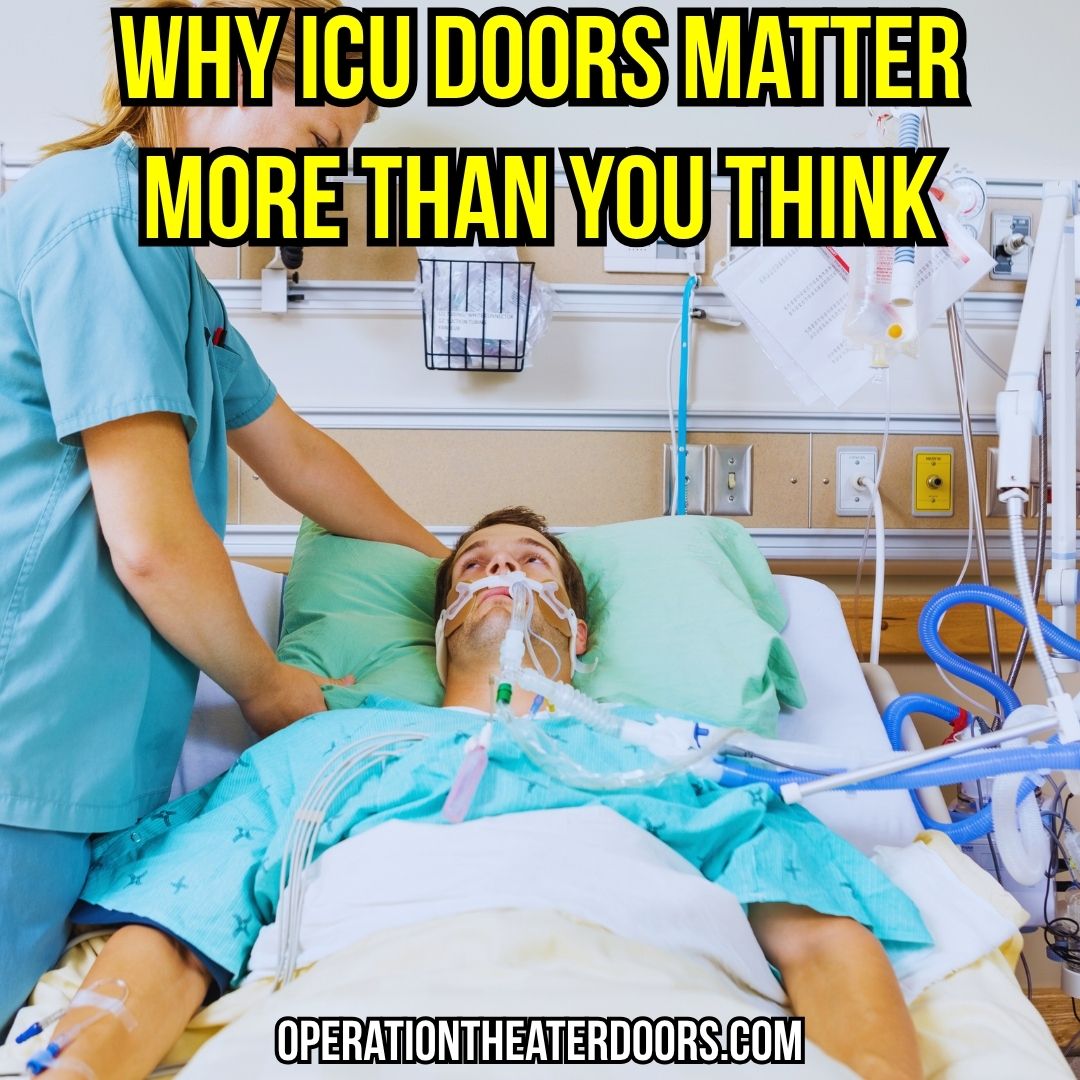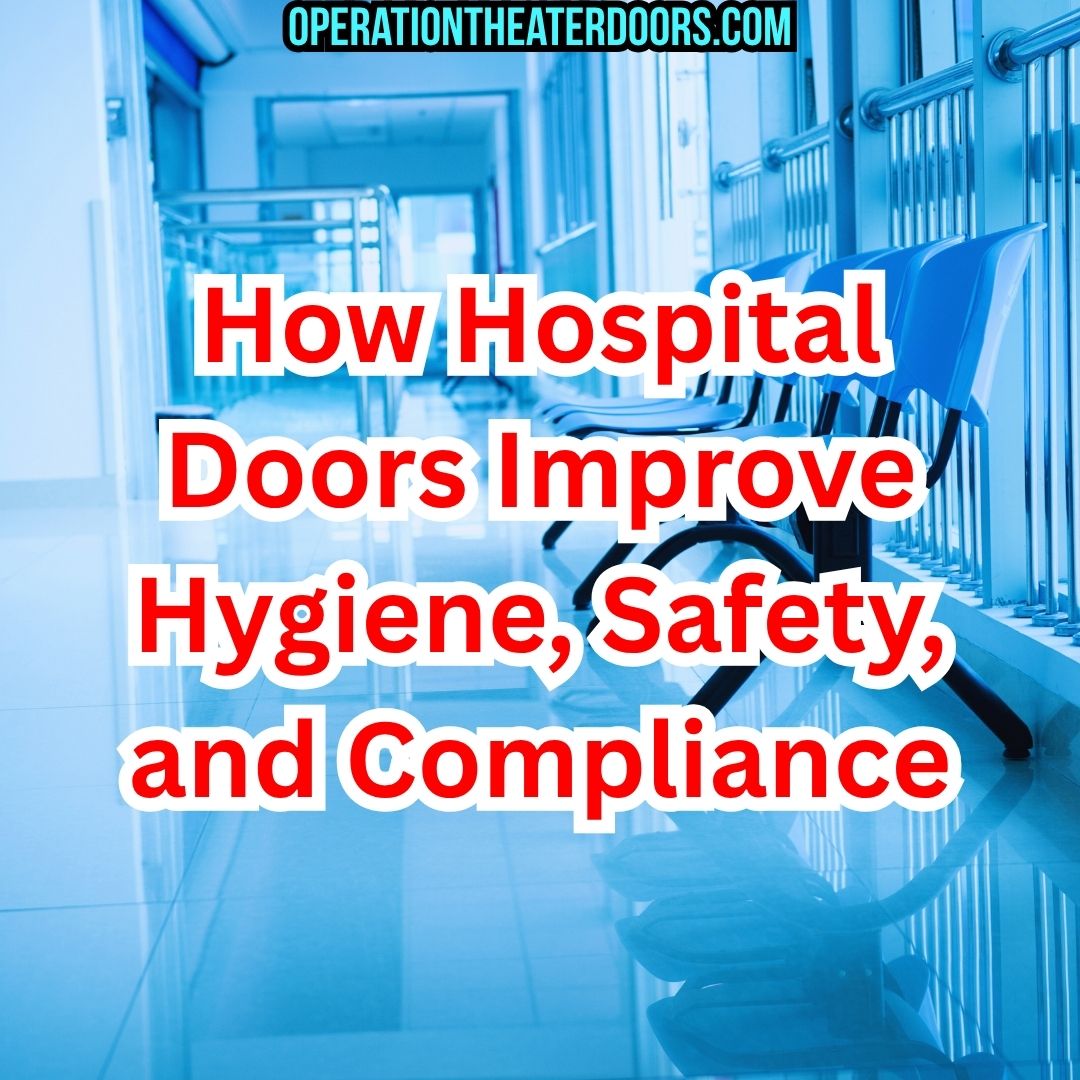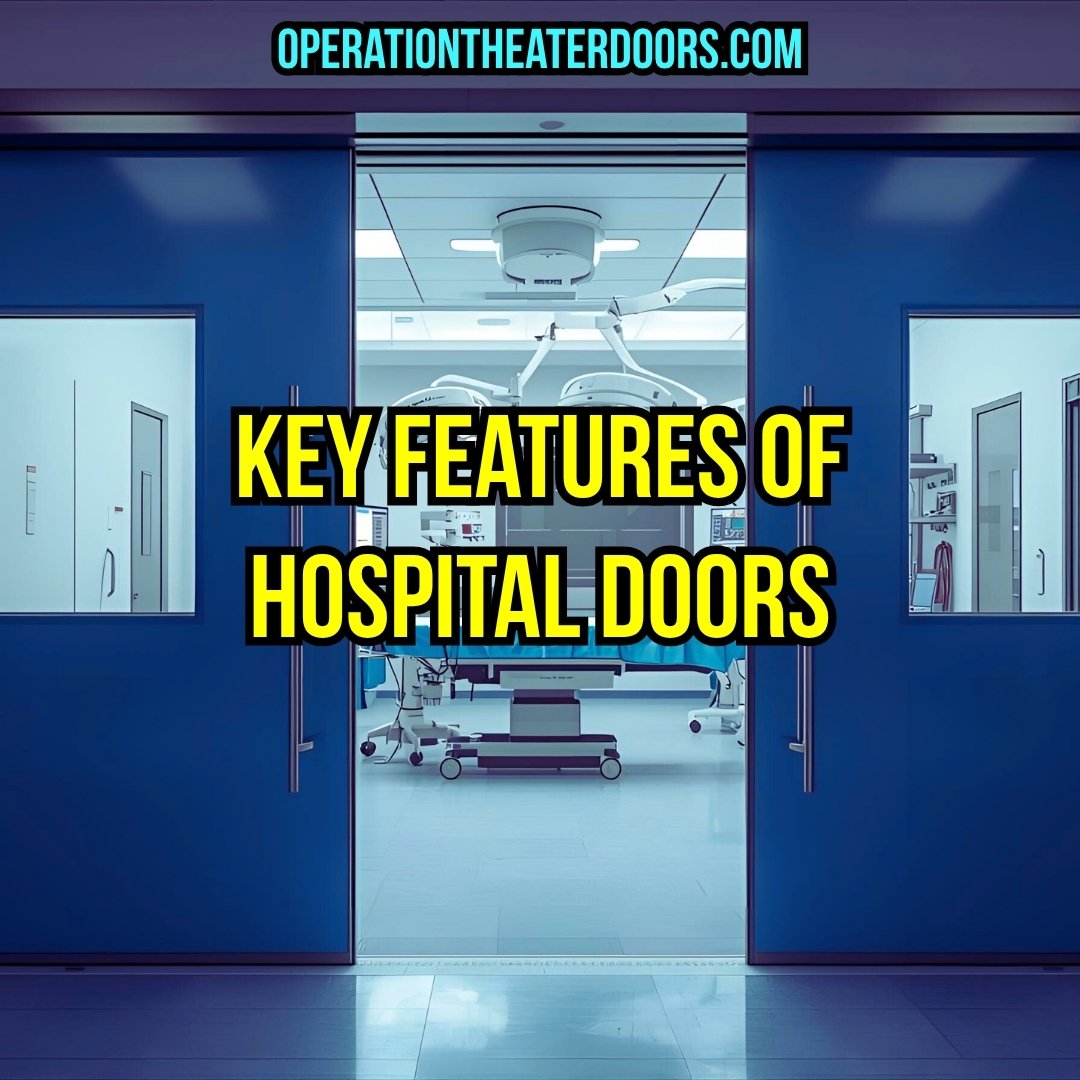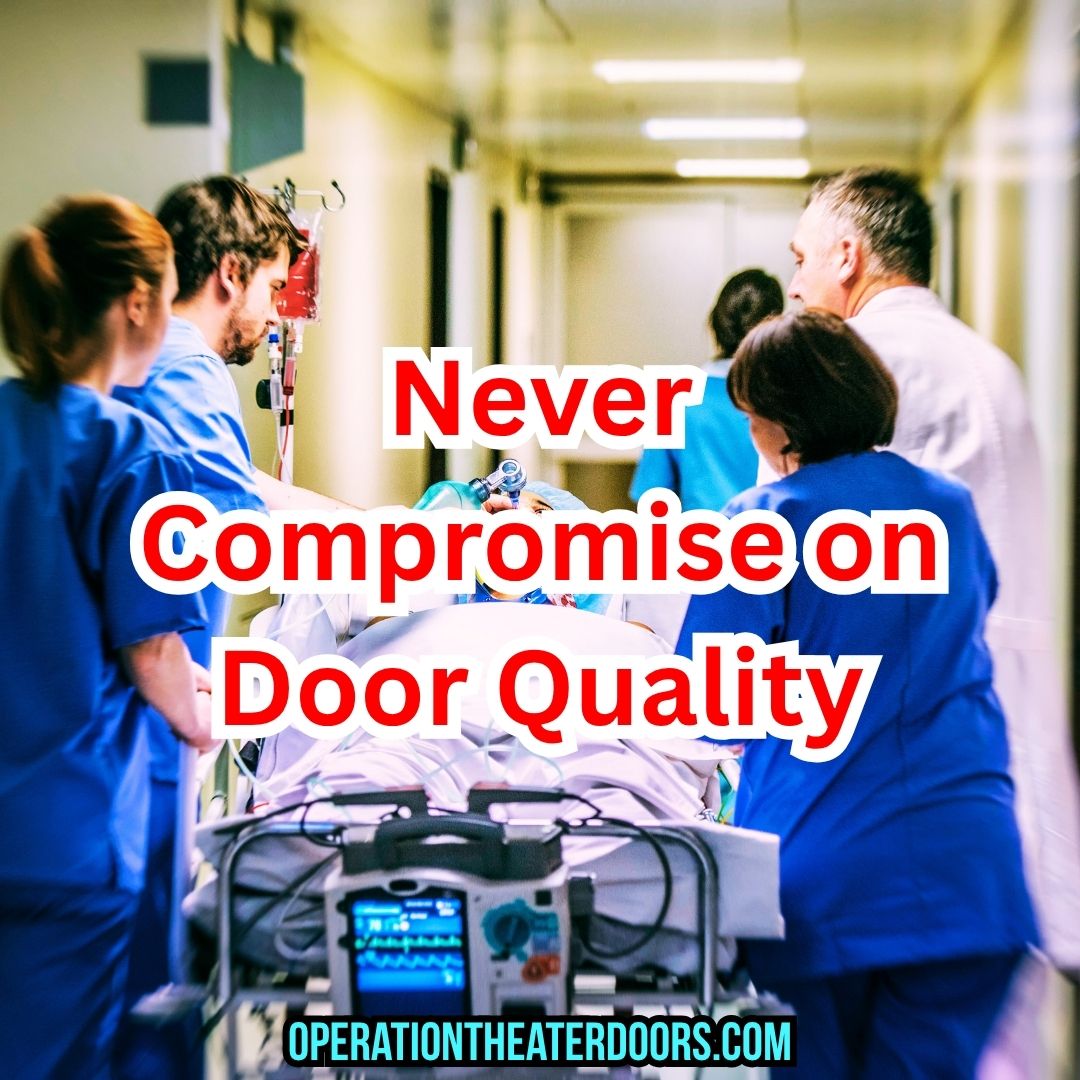
India’s healthcare system is changing rapidly. Hospitals, diagnostic centres, and pharmaceutical plants face stricter compliance standards than ever before. At the same time, patients and regulators demand safer, cleaner, and more efficient facilities. Traditional construction often fails to keep pace with these requirements. Modular hospital infrastructure has emerged as the solution — delivering speed, compliance, flexibility, and durability.
From ICU doors to PUF insulated panels, from operation theatre doors to cleanroom flush doors, every element in a hospital’s infrastructure directly affects safety and performance. The shift towards modular designs is not just about convenience. It is about infection control, NABH/WHO compliance, and future-ready healthcare delivery.
ICU Doors: Protecting Patients Where It Matters Most
Intensive Care Units are the core of critical care. Every detail, including the ICU door, plays a role in patient outcomes. Wide, smooth-operating doors allow for safe patient transfer and quick response in emergencies.
Key Features of Modern ICU Doors
- Hermetically sealed options to control infection spread.
- Antimicrobial finishes for hygiene and easy cleaning.
- Vision panels for patient monitoring without disturbance.
- Automation options for touch-free operation.
Hospitals planning an upgrade can explore specialized ICU Doors designed for critical care ICU Doors.
According to the Ministry of Health and Family Welfare, infection prevention in ICUs is one of the most important aspects of hospital design. Proper ICU doors ensure both compliance and patient safety.
Operation Theatre Doors: The Barrier Against Contamination
An operation theatre door is not just an entry point; it is a critical infection-control barrier. Poorly designed OT doors can compromise the sterile zone.
Why OT Doors Matter
- Hermatical sealing ensures controlled airflow.
- Sliding OT doors save space and reduce contamination risk.
- Flush, easy-to-clean surfaces prevent microbial build-up.
Hospitals looking for NABH-ready OT setups can explore our Operation Theatre Doors.
The NABH guidelines clearly define requirements for OTs, including airflow, filtration, and door sealing standards.
Fire Exit Doors: Safety Beyond Sterility
Hospitals must also prepare for emergencies. A fire exit door is mandatory in all healthcare facilities. Beyond compliance, these doors ensure quick evacuation and save lives during fire or disaster.
Essential Features of Fire Exit Doors
- Fire rating up to 120 minutes.
- Panic bars for easy exit.
- Compliance with NBC and NABH standards.
To learn more about durable, compliant hospital safety solutions, see Fire Exit Doors.
The National Building Code of India specifies fire safety requirements, and hospitals must align with them to ensure patient safety.
Cleanroom Doors: Keeping Contamination Out
Pharmaceuticals, diagnostics labs, and electronics require strict contamination control. A cleanroom door is central to this.
Advantages of Cleanroom Doors
- Airtight sealing prevents cross-contamination.
- Flush surfaces with antibacterial coating.
- Options in HPL, stainless steel, or aluminium finishes.
Pharma facilities and labs can review Cleanroom Doors for NABH and GMP compliance.
The World Health Organization provides global guidelines for cleanroom construction in pharma plants, where door quality is non-negotiable.
PUF Insulated Doors & Panels: Strength Meets Efficiency
PUF insulated doors combine strength, lightweight design, and excellent thermal performance. In hospitals, they are used in sterile areas, cold rooms, and ICUs. In pharma and F&B plants, they maintain temperature and hygiene.
Benefits of PUF Insulated Doors
- Superior insulation reduces HVAC load.
- Easy-to-clean and hygienic.
- Durable with long service life.
Hospitals and pharma units can explore PUF Insulated Doors for specialized projects.
The GMP guidelines highlight the role of insulated panels in contamination control.
Modular Operation Theatres: Designed for the Future
Traditional OTs take months to build and may not meet evolving standards. A modular operation theatre can be designed, manufactured, and installed in a fraction of that time — with compliance built in.
Features of Modular OTs
- Prefabricated panels and OT doors.
- Integrated HVAC and HEPA filtration.
- Antimicrobial flooring and cladding.
- Scalability for future expansion.
Hospitals aiming for advanced infrastructure can explore Modular Operation Theatres.
The WHO Surgical Safety Checklist emphasizes infection control — modular OTs make compliance more achievable.
Turnkey Healthcare Solutions: One Partner, End-to-End
Building a hospital or cleanroom requires more than products. Turnkey healthcare solutions provide everything — design, manufacturing, installation, and validation — from a single trusted partner.
Why Turnkey Execution Works Best
- Saves time with modular construction.
- Ensures NABH and WHO compliance.
- Provides single-window accountability.
- Reduces cost overruns and delays.
Hospitals and labs can learn more about Turnkey Projects designed for healthcare infrastructure.
For compliance insights, administrators can also refer to WHO’s Hospital Readiness Guidelines.
Why This Matters for Ahmedabad and Gujarat
Ahmedabad and Gujarat have become healthcare and pharma hubs in India. Hospitals, diagnostic labs, and pharmaceutical units across the state increasingly adopt modular designs.
- ICU Door Manufacturer in Ahmedabad – trusted by hospitals for critical care.
- Operation Theatre Door Manufacturer in Gujarat – supporting NABH-ready OTs.
- PUF Insulated Doors for Pharma in Gujarat – widely used in cleanrooms and sterile zones.
- Cleanroom Doors in Ahmedabad – ensuring contamination-free environments for pharma and electronics.
This region’s rapid growth means modular hospital infrastructure is no longer optional — it is essential.
FAQs
Q1: Why are modular OTs better than traditional OTs?
Modular OTs are faster to build, easier to maintain, and ensure NABH/WHO compliance. They also reduce infection risks compared to conventional OTs.
Q2: Are PUF insulated doors only for hospitals?
No. PUF insulated doors are used in hospitals, pharma plants, food industries, and electronics cleanrooms for hygiene and temperature control.
Q3: How do ICU doors improve infection control?
ICU doors with hermetic sealing and antimicrobial finishes prevent cross-contamination and support patient monitoring without unnecessary entry.
Q4: Do fire exit doors need certification?
Yes. Fire exit doors in hospitals must meet NBC standards and be fire-rated. Panic bars are recommended for quick evacuation.
Q5: What is the role of cleanroom doors in pharma?
Cleanroom doors ensure airtight sealing, durability, and GMP compliance, making them critical for sterile production environments.
Q6: Do turnkey projects include validation?
Yes. Complete turnkey solutions include design, installation, testing, and compliance validation before handover.
Q7: How fast can modular ICU setups be built?
Depending on scope, modular ICUs can be set up in weeks rather than months, reducing downtime and improving patient readiness.
Q8: Are NABH and WHO compliance mandatory?
Yes. Hospitals and pharma units must comply with NABH, GMP, and WHO guidelines to maintain accreditation and ensure safety.
Final Thoughts
Modular hospital infrastructure is not a luxury in India anymore. It is the backbone of safe, compliant, and future-ready healthcare. From ICU doors to PUF insulated panels, from operation theatre doors to cleanroom solutions, every component matters.
For hospitals, diagnostic centres, and pharma facilities, the choice of the right partner determines compliance, safety, and long-term performance.
AUM Industries (aumindustriesmfg.com) stands as a trusted name in operation theatre doors, ICU doors, cleanroom solutions, and turnkey projects. With in-house manufacturing, NABH/WHO/GMP compliance, and proven execution, we deliver healthcare infrastructure designed for the future. 📞 Contact us today to discuss your hospital or pharma project.






